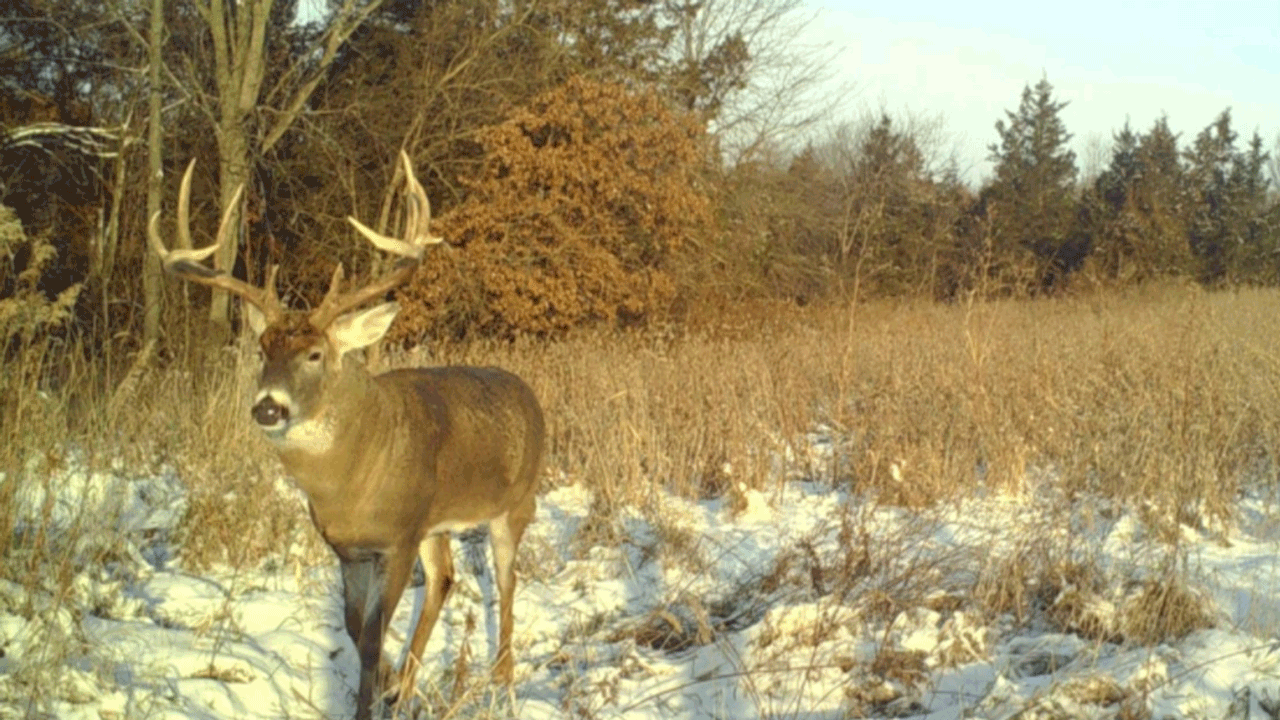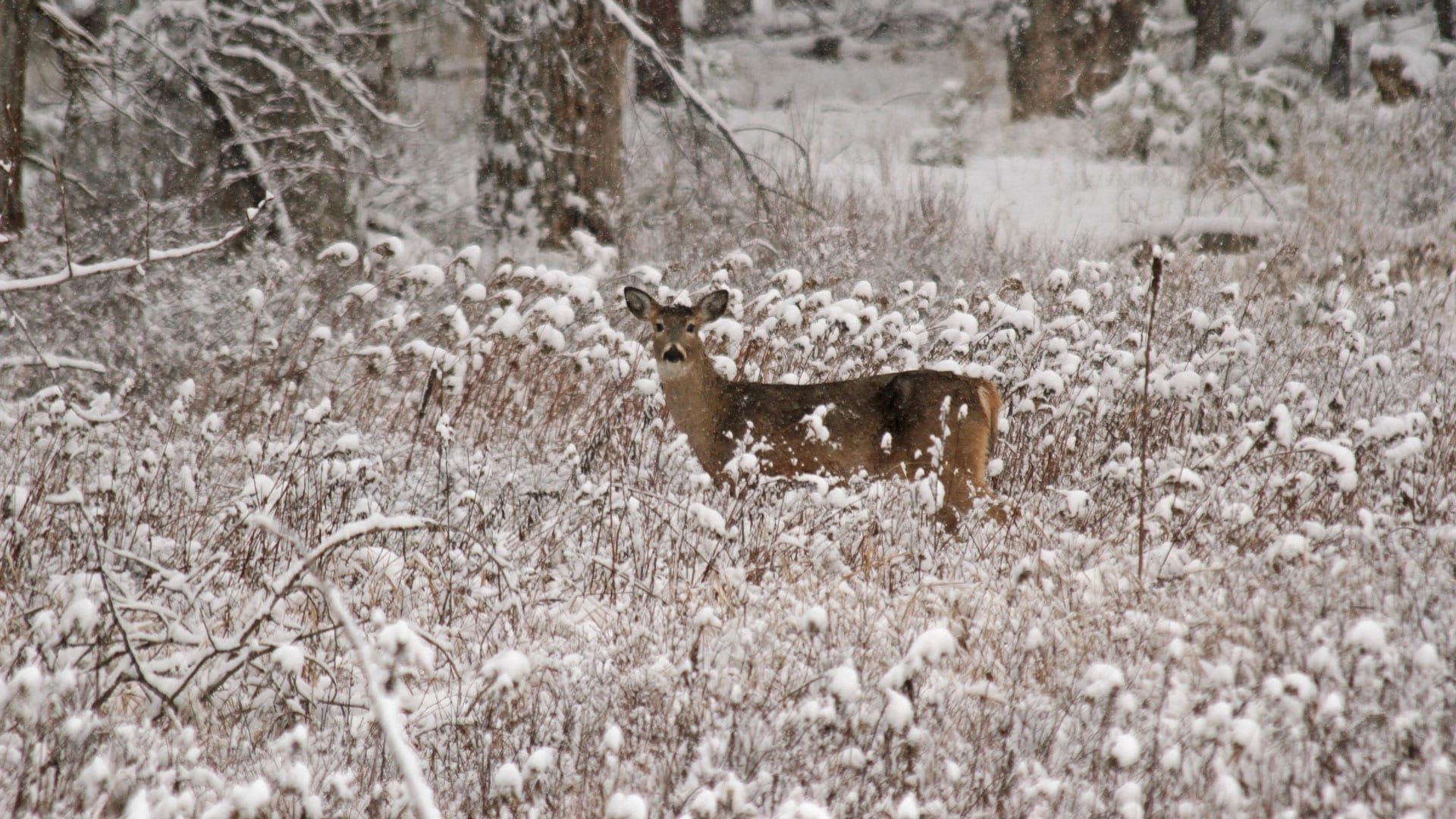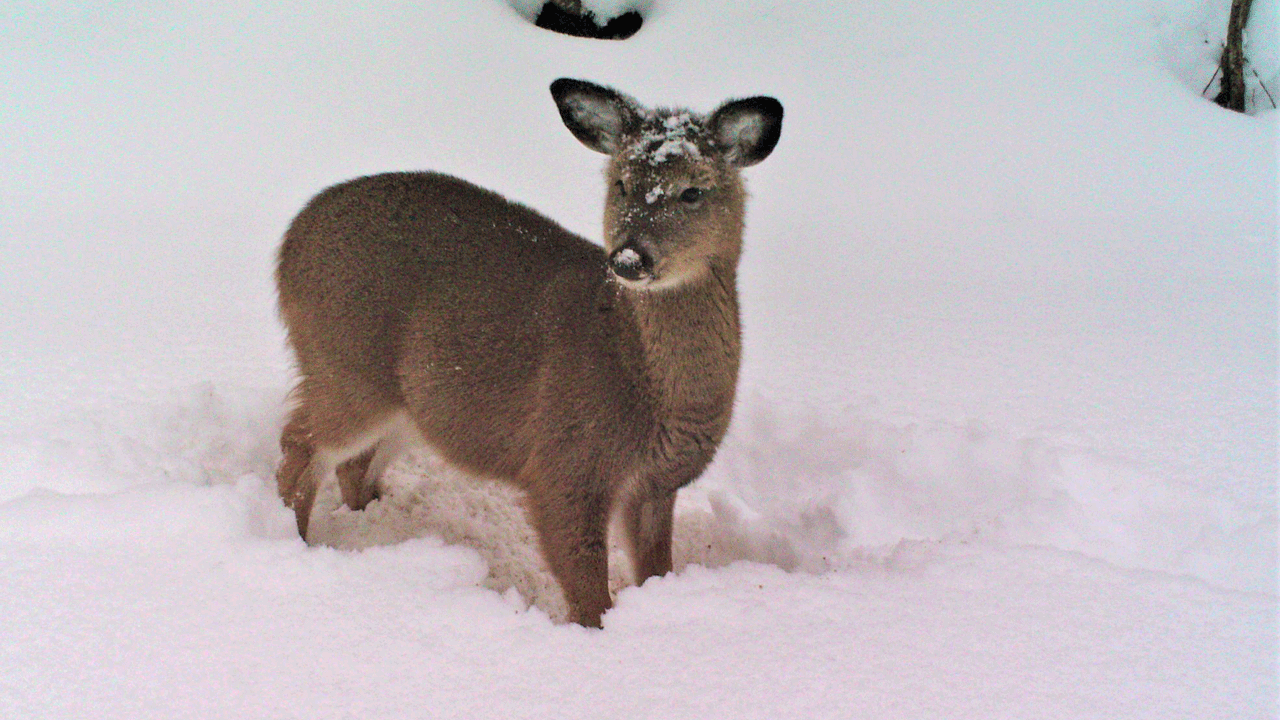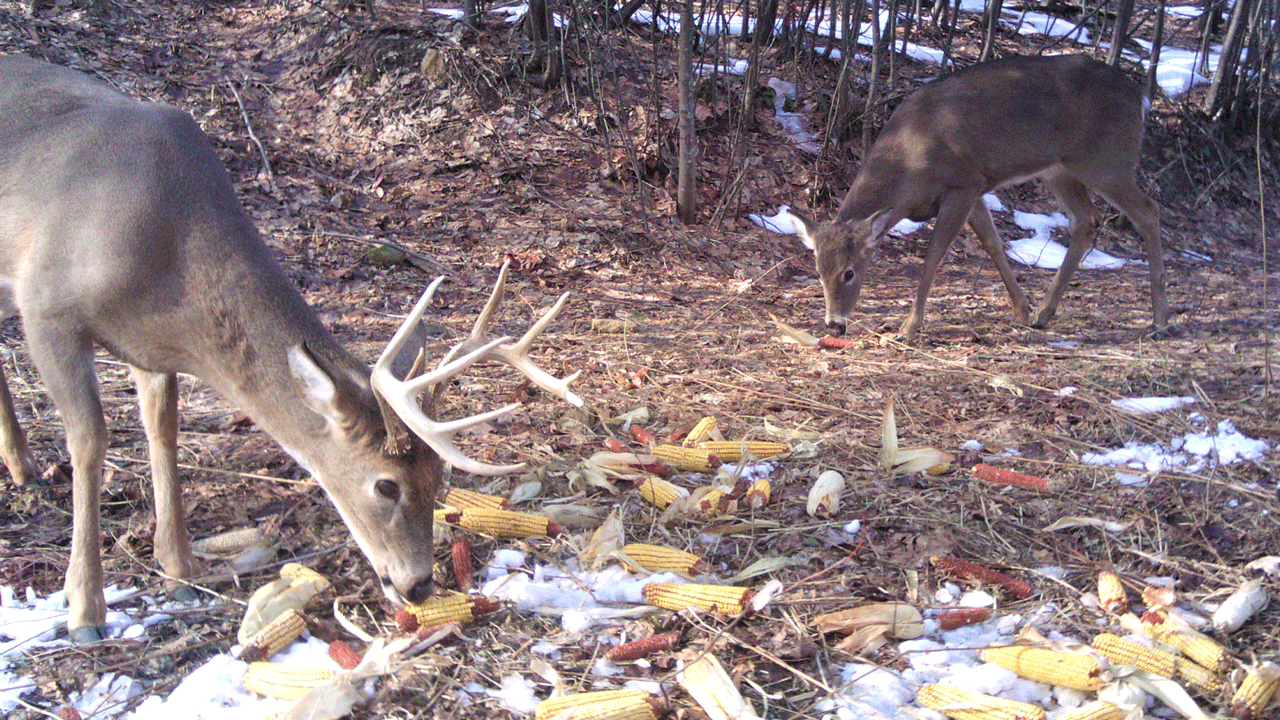Following the rut, most bucks find that their fat reserves have evaporated to almost nothing and they’re just plain worn out from chasing females and eluding hunters all fall. And then winter hits. Long stretches of zero-degree weather and deep snowfall can spell doom for some bucks and yearlings. Others only make it through by entering what scientists refer to as a semi-hibernation mode.
According to studies, mature bucks spend 85% of their time bedded down during the winter months (mid-December thru March), with most activity occurring in the last hour before dark. They also use terrain to their advantage, preferring to bed on south-facing slopes to shield them from the wind and allow them to soak up as much sunlight as possible.

Killing a buck in the late season won’t be easy. The time they spend on their feet is very limited.
Although they rarely sleep in the way that we humans do, whitetails do need rest. Research suggests that a deer’s heart rate drops to about 65-72 beats per minute when it is lying down, which is slow enough to promote body cell regeneration. By comparison, their heart rate is approximately 86 bpm while standing, 102 bmp while walking, and 155 bpm while running. The slower heart rate of a buck that beds 85% of the time during winter also means that he burns fewer calories and, therefore, doesn’t require as much nutrition.
Whitetail expert Charlie Alsheimer has stated that a biological shift occurs in whitetails during winter months. “During the early part of winter they have reduced thyroid function and decreased metabolic activity,” he writes in Whitetail: Behavior Through the Seasons. “This results in less food being needed for survival. Then by mid-winter their system slows down even further and they enter a time when they are almost hibernating on the hoof. Scientists refer to this as a semi-hibernating state. It allows deer to become quite resistant to nutritional deprivation and the stresses of winter’s harsh climate. This phenomenon reduces a deer’s food intake by approximately 30%, regardless of the food available, and their activity by up to 50%.”

Late winter brings on survival mode for most deer herds across the country.
Of course, for every upside there is a downside. A deer’s reluctance to travel can lead to further weakness as local food sources diminish. A deer can literally grow too weak to seek out new food.
During winter months, many whitetails – even the most cautious mature bucks – will revert to their summer habit, which is to crowd food sources. As hunters, we often convince ourselves that mature animals bed far from food. We reason that since we only get pictures of those bucks in our fields at night, that they must be coming from somewhere else. But that’s not always the case. I’ve seen instances where bucks bedded less than 20 yards from the edge of a food plot or soybean field in the winter, after deer season, after hunting pressure subsided. As long as there’s enough quality bedding habitat for them to feel safe, there’s no reason for them to waste energy traveling great distances.
The operative phrase there is “feel safe.” Outdoor writer and photographer R.G. Bernier once wrote that “whitetails live exclusively in the present with two primary goals, eat and keep from being eaten.” The country-wide proliferation of predators in recent years has added a new wrinkle to winter whitetail survival. In the upper Midwest, wolves and coyotes do the damage, while in the Eastern U.S. it’s mainly coyotes. Fifty years ago, coyote overpopulation seemed far-fetched in states such as Ohio, Pennsylvania, and West Virginia, but today it’s a fact of life. Biologists often tout that predators only cull the weak, the old, and the young, but most miss the fact that coyotes can also run a perfectly healthy adult whitetail until it becomes weak.

Making it through the winter.
Despite this, though, coyotes are a relative non-factor in the winter – yes, they’ll certainly take a few deer, but not as many as most hunters think. Coyotes wreak their havoc during the spring fawning season. In winter, starvation is still the primary threat to the deer herd. Deep snow, as well as a thick crust on the snow, prevents deer from accessing ground-level foods such as clover, turnips, soybeans, and cut cornfields, which is why, during winter, browse is so important. On average, a whitetail consumes roughly six pounds of browse per day.
Hunting in northern states frequently experiences ebbs and flows due to harsh winters. Deer herds in Michigan, Maine, and almost every Canadian province can take years to recover from consecutive bad winters. Biologists in New Brunswick, Canada, for instance, estimated that approximately 20% of the deer herd starved to death during the winter of 2014-15. Statistics like that make me grateful to live in an agricultural area, where winter kill tends to be far less.

Some hunters help feed their deer herds through the winter with supplemental food sources.
The knee-jerk reaction to offsetting the effects of starvation is to begin a winter feeding program. That can be good, but it can sometimes hurt deer more than help them, especially in areas where a deer’s diet consists of mostly browse. It takes deer approximately a week to adjust to a new type of food, so if you live in a non-agricultural area, consider taking a slower approach to winter feeding and at first only give them small amounts of high-energy foods such as corn. This allows the microorganisms in their rumen enough time to digest and adapt to the new food.
Also, if you decide to stop winter feeding, it’s best to do so gradually so that deer have time to adjust to the change. If they become reliant on a feeder, and then suddenly that feeder is gone, that can spell disaster for an animal trying to survive the winter. All of these are reasons why most state agencies and wildlife management experts advise against winter feeding. It takes research and planning to do it right.
It’s human nature to feel sympathy for wildlife, especially during winters like the one we’ve been experiencing this year. But whitetails are amazing creatures with a strong survival instinct. When the weather finally breaks, and everyone breathes a collective sigh of relief, there’s no doubt we’ll find that the whitetail herd made it through winter just fine.

 By
By 



